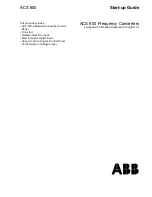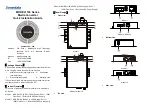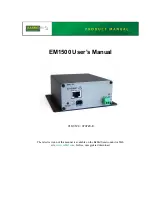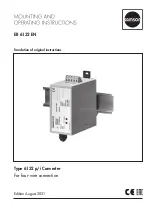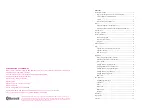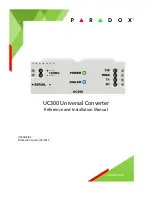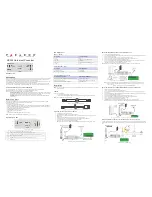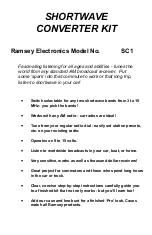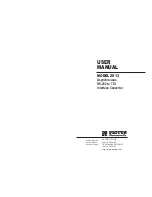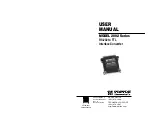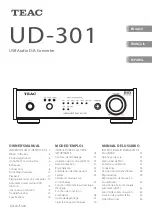
R2XL1
•
5
The next component in line is R4. This 1K resistor in combination with R3
and R5 sets the gain of the first inverting opamp stage (U1:C). An inverting
opamp will take the signal presented on its input and flip the polarity of the sig-
nal on its output giving you the inverse value of the original. In our case, the
resulting output signal from the opamp (pin 8) will be opposite in polarity to
that of the original input signal on the left hand side of R4. The amplitude of
the signal will also change depending on the gain of the circuit. The formula
for determining the gain in this circuit is given by Av = -Rf / Ri, where Ri is the
input resistance of R4 and Rf is the feedback resistance of R3 + R5 together.
If we want to find the maximum gain of this stage, we can take our 1,000 (1K)
ohm input resistor and divide its value by our 10,000 (10K) ohm pot and 100
ohm feedback resistors added together (10,100 or 10.1K ohms). This works
out to a maximum gain of -10.1 (the negative value just means it is inverted).
How does this affect our signal? Take for example a +1V input present at R4.
Multiply the input signal value by the calculated gain factor (+1V x -10.1) to
obtain -10.1 volts on the output (pin 8) of the amplifier. That wasn’t so hard
was it?
Let’s move on. The signal output from pin 8 (U1:C) then goes through two
more opamp stages (U1:A and U1:B) for processing before we’re done! One
of these stages has a familiar topology. Take a look at U1:B. It’s another in-
verting opamp using resistors of R1 and R2 to set its gain. Use the formula
from before to figure out for yourself what the gain has been set for. We’ll con-
firm in a moment if you are correct.
The other opamp (U1:A ) is configured as a non-inverting amplifier. A non-
inverting opamp does just what it sounds like, it preserves the original signal
polarity while offering the ability to amplify the signal (increase or decrease its
amplitude). The formula for determining the gain of this configuration is given
by Av = 1+ Rf / Ri, where Ri is the input resistance (0 ohms), and Rf is the
feedback resistance (0 ohms). Since there are no input or feedback resistors,
the gain works out to be 1 for this stage. This type of circuit is commonly
called a Voltage Follower (for obvious reasons) and it acts as a buffer.
Both stages U1:A and U1:B have their gain set to 1 and –1 respectively (did
you get –1 for the gain of the inverting amplifier?). Because one opamp is in-
verting and the other is not, their outputs are always opposite of one another.
The end results is a combined gain of 2 for these two opamps together. How
does that work? Let’s analyze this. If the output of our first stage (U1:C) is +1
volt (to make the math easy) and it is amplified by the inverting amplifier (U1:
B) with a gain of –1, its output will be –1 Volt. When the same 1V input is ap-
plied to the non-inverting stage (U1:A) with a gain of 1, its output will be 1 Volt.
Looking across the outputs of both amps (pins 1 and 7) the difference be-
tween the two works out to be 1 - (-1) = 2 Volts. Hey… that’s pretty neat!
Armed with the information that our first stage (U1:C) has a maximum gain
of 10.1 and the second stage (U1:A and U1:B) has a fixed gain of 2, we can
Summary of Contents for RCA to XLR Converter R2XL1
Page 8: ...R2XL1 8...





















